Match List -I (Equations) with List -II (Type of processes) and select the correct option.
List -IList -IIEquationType of processes(a)Kp>Q(i)Non spontaneous(b)ΔG∘<RTlnQ(ii)Equilibrium(c)Kp=Q(iii)Spontaneous and endothermic(d)T>ΔHΔS(iv)Spontaneous
The correct Answer is:c
(A) Kp>Q orQ<Kp0 means that the reaction will proceed in the forward direction, i.e., reaction is spontaneous .Hence, A→(s)
(B) ΔG=ΔG∘+RTlnQ
At equilibrium , ΔG=0,Q=K. Hence,
ΔG∘=−RTlnK
∴ΔG∘=−RTlnK(i.e.,ΔG∘0+RTlnQ
When ΔG∘<RTlnQ,ΔG is +ve.
Therefore, forward reaction is non-spontaneous.
Hence,B→(p) Kp=Q means that the reaction is in equilibrium . Hence, C→(q).
(D ) T>ΔHΔS means TΔS>ΔH . AsΔG=ΔH−TΔS
Hence,reaction is spontaneous, i.e.,ΔG is -ve only when ΔH is +ve . Hence, D→(r).
Topper's Solved these Questions
- BOOK - PRADEEPCHAPTER - THERMODYNAMICSEXERCISE - ASSERTION AND REACTION TYPES QUESTIONS3videos
THERMODYNAMICS
- BOOK - PRADEEPCHAPTER - THERMODYNAMICSEXERCISE - LONG ANSWER QUESTIONS21videos
THERMODYNAMICS
- BOOK - PRADEEPCHAPTER - THERMODYNAMICSEXERCISE - NCERT EXEMPLAR PROBLEMS WITH ANSWERS, HINTS AND SOLUTIONS( SHORT ANSWER QUESTIONS)31videos
THERMODYNAMICS
- BOOK - PRADEEPCHAPTER - STRUCTURE OF ATOMEXERCISE - Competition Focus (JEE (Main and Advanced)/Medical Entrance (IX. Assertion And Reason Type Questions (Type II))12videos
STRUCTURE OF ATOM
Similar Questions
Match List -I (Equations) with List -II (Type of processes) and select the correct option.
List -IList -IIEquationType of processes(a)Kp>Q(i)Non spontaneous(b)ΔG∘<RTlnQ(ii)Equilibrium(c)Kp=Q(iii)Spontaneous and endothermic(d)T>ΔHΔS(iv)SpontaneousView SolutionMatch the List I with List II and select the correct option.
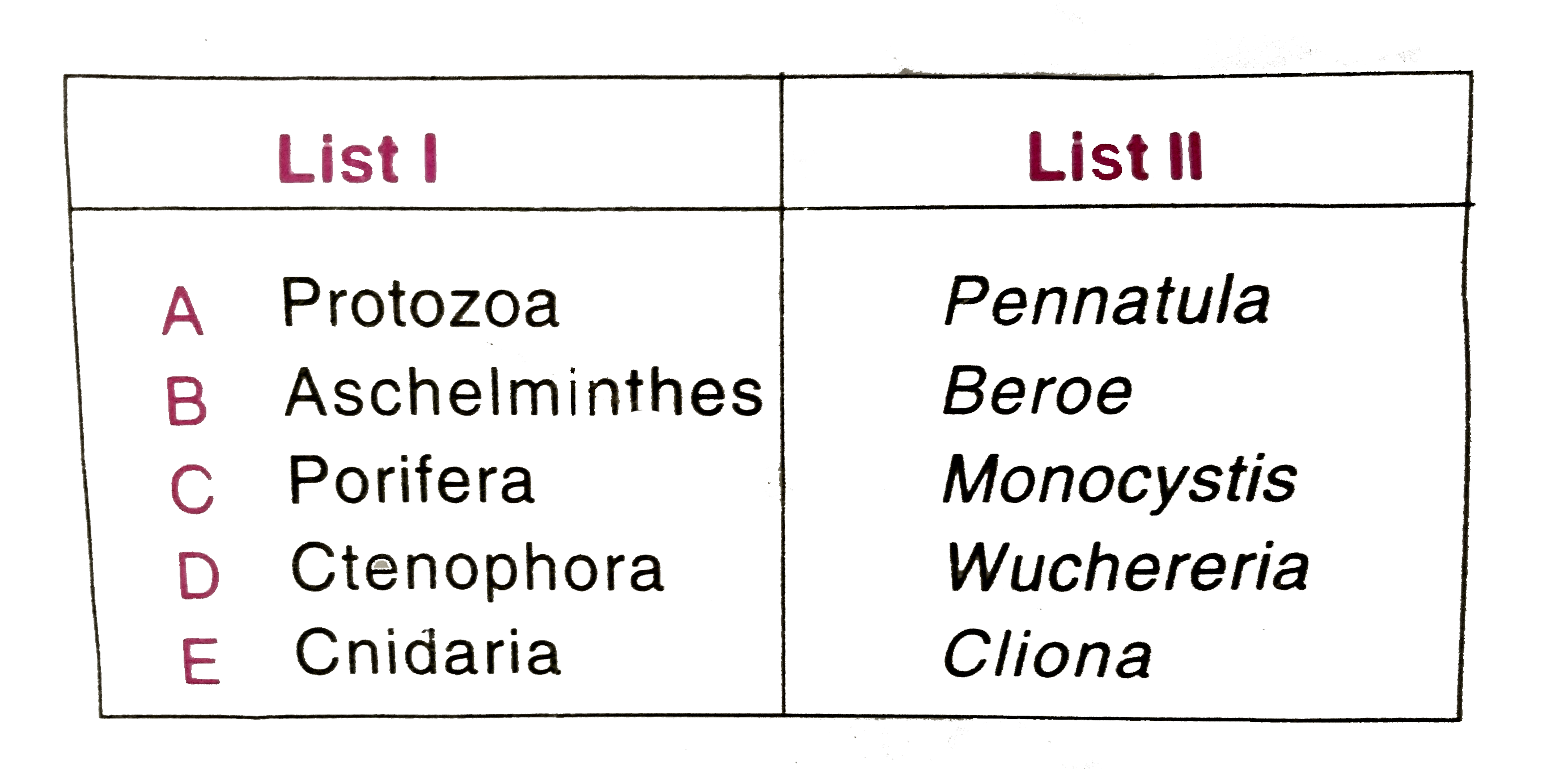 View Solution
View Solution
Knowledge Check
- Question 1 - Select One
Match List -I (Equations) with List -II (Type of processes) and select the correct option.
List -IList -IIEquationType of processes(a)Kp>Q(i)Non spontaneous(b)ΔG∘<RTlnQ(ii)Equilibrium(c)Kp=Q(iii)Spontaneous and endothermic(d)T>ΔHΔS(iv)SpontaneousA1(i), 2(ii), 3(iii), 4(iv)B1(iii), 2(iv), 3(ii), 4(i)C1(iv), 2(i), 3(ii), 4(iii)D1(ii), 2(i), 3(iv), 4(iii) - Question 2 - Select One
Match List-I and List -II and select the correct option
 AA-2, B-4, C-3, D-1BA-2, B-1, C-4, D-3CA-3, B-4, C-2, D-1DA-4, B-3, C-1, D-2
AA-2, B-4, C-3, D-1BA-2, B-1, C-4, D-3CA-3, B-4, C-2, D-1DA-4, B-3, C-1, D-2 - Question 3 - Select One
Match list I with list II and select the correct option
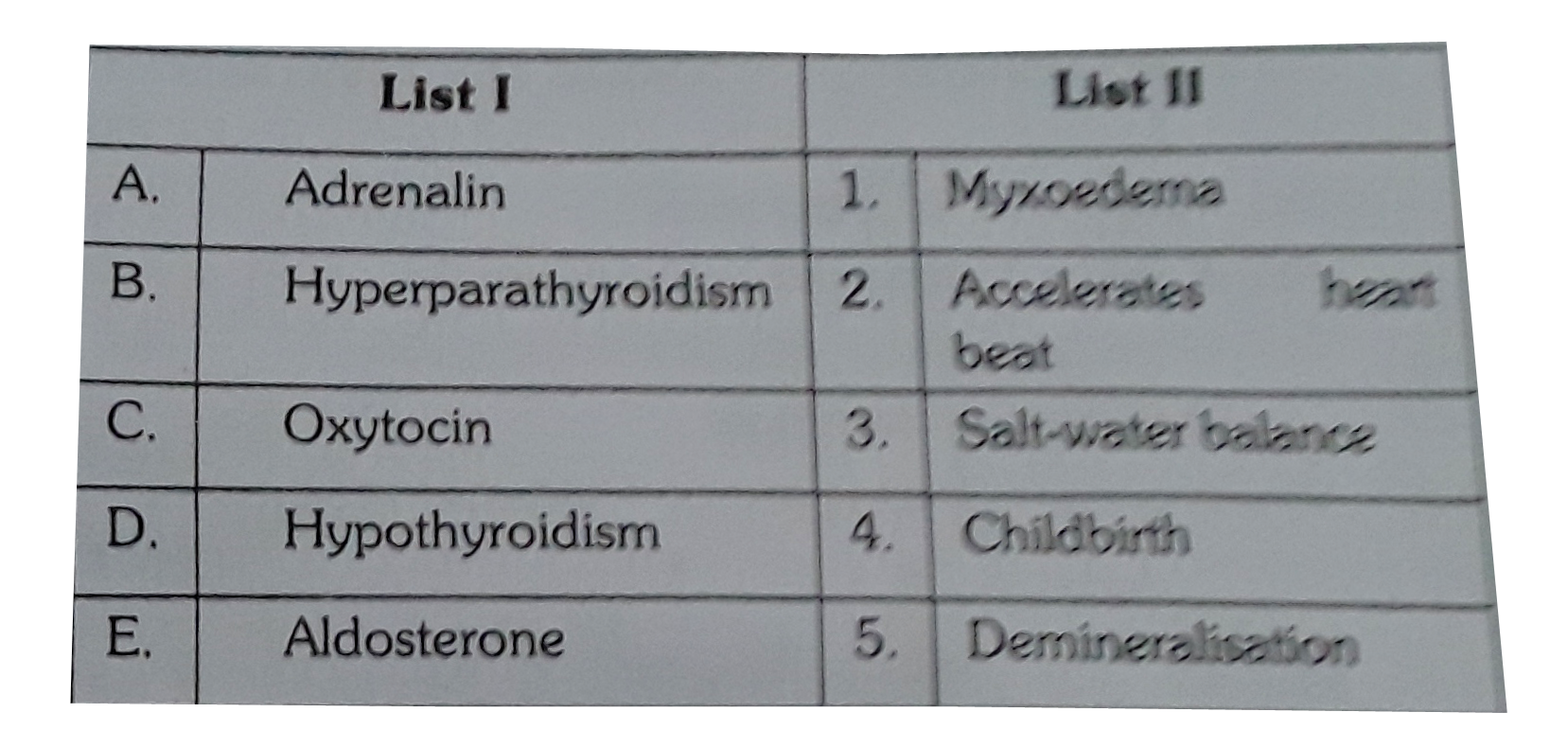 AA-2, B-5, C-4, D-1, E-3BA-3, B-4, C-5, D-3, E-2CA-5, B-3, C-2, D-4, E-1DA-2, B-3, C-4, D-5, E-1
AA-2, B-5, C-4, D-1, E-3BA-3, B-4, C-5, D-3, E-2CA-5, B-3, C-2, D-4, E-1DA-2, B-3, C-4, D-5, E-1
Match List-I (Cell type) with list-II (Characteristic) and Select the Correct answer
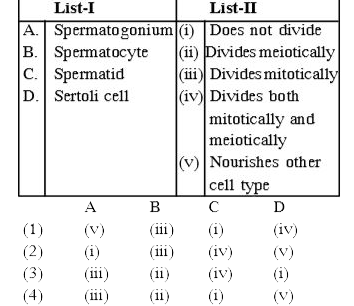 View Solution
View SolutionMatch the following:
Column-1Column-2(A)KP>QP(p)Non-spontaneous(B)ΔG∘<RtlogeQp(q)Equilibrium(C)Kp=Qp(r)Spontaneous and endothermic(D)T>ΔHΔS(s)Spontaneous(t)Spontanous and exothermicView SolutionMatch list I with List II and select the correct option
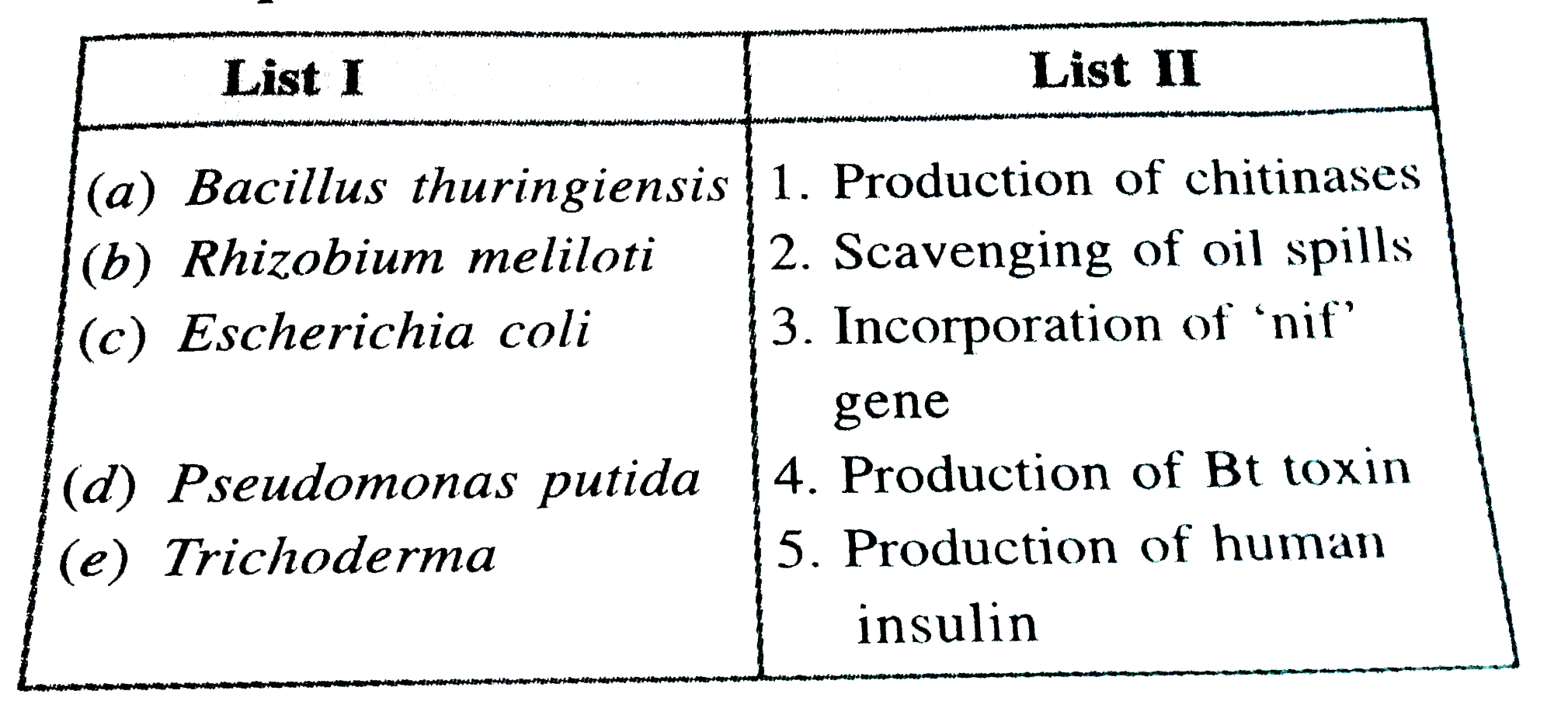 View Solution
View SolutionMatch list I with list II and select the correct option
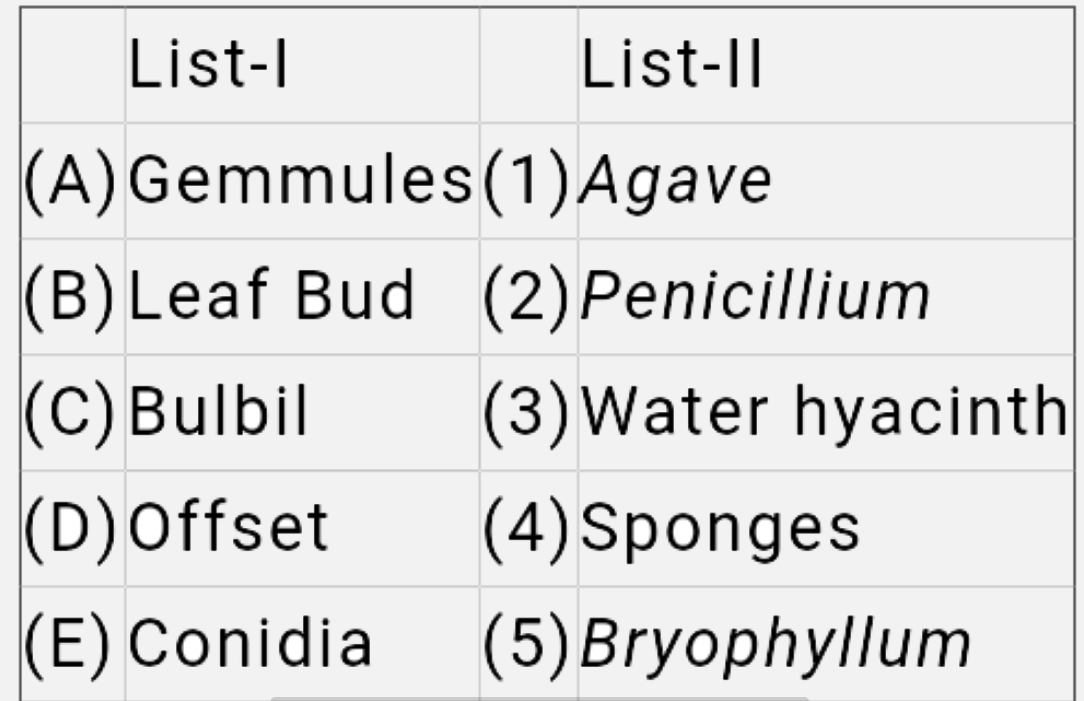 View Solution
View SolutionMatch List I with List II and select the correct option
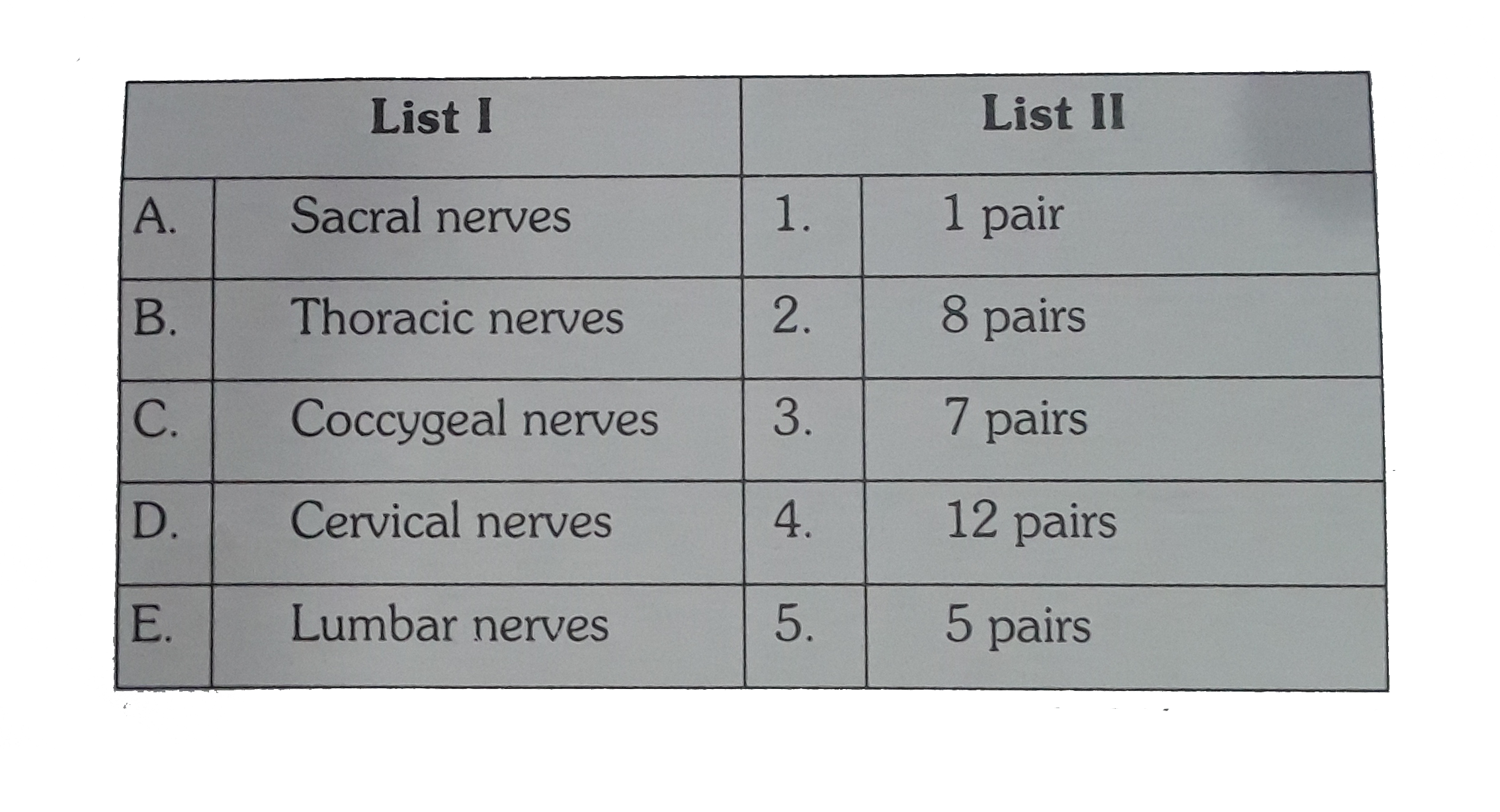 View Solution
View Solution

